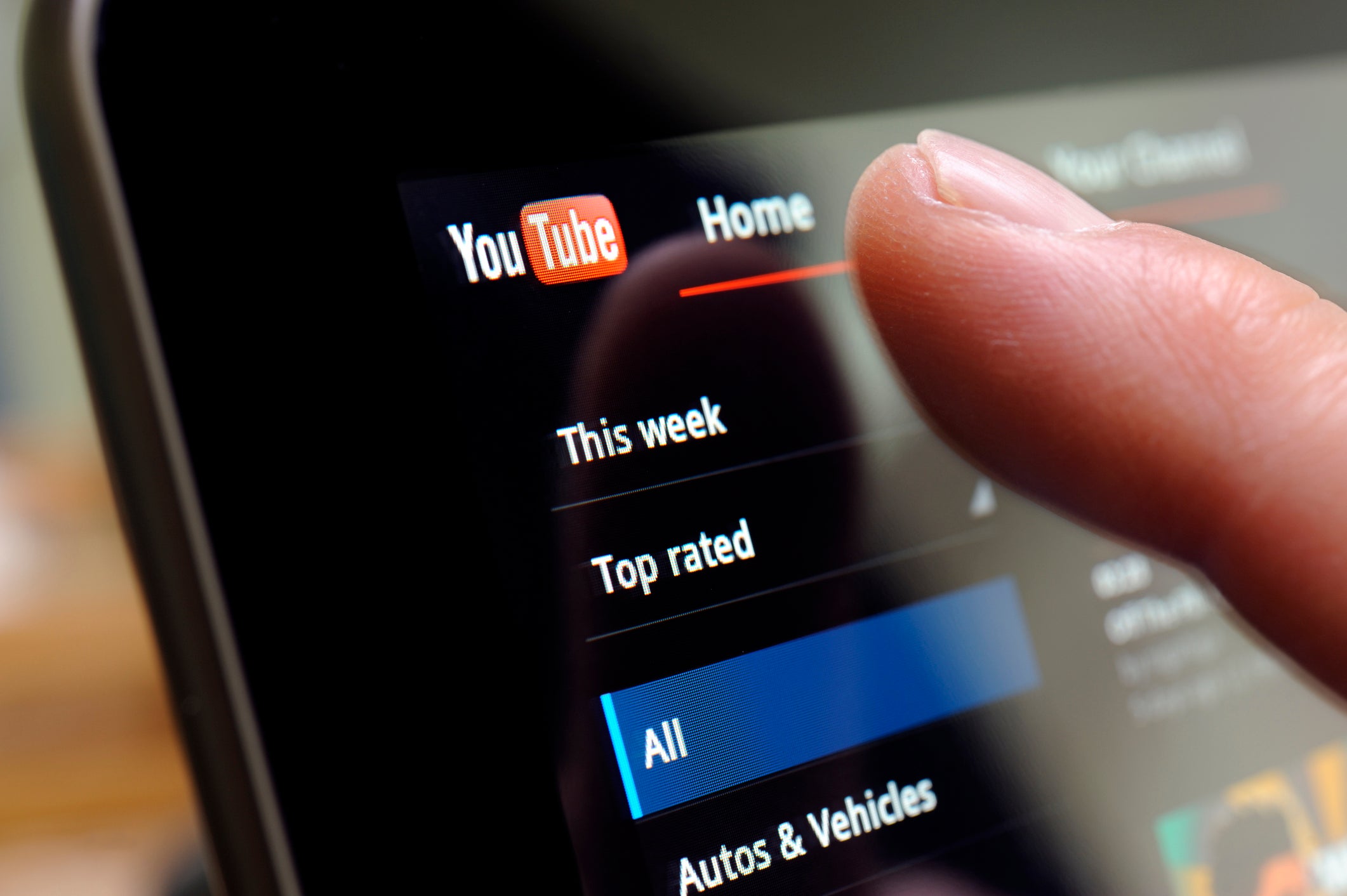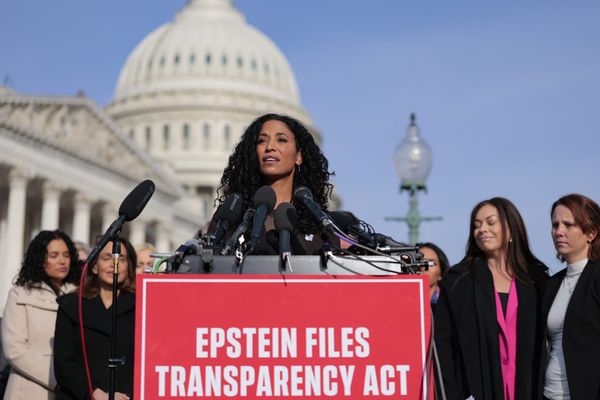YouTube is the biggest beast in the attentional infrastructure of modern media,” Amol Rajan, presenter of Radio 4’s flagship Today programme, announced this week. Listeners around the country – the older ones, at least – must have been left perplexed. What is the “attentional infrastructure”? And isn’t YouTube just a website for sharing videos of kittens mewing or post-operative children high on trace sedatives?
No. According to the media regulator Ofcom, YouTube is now the second-most watched service in the UK, ahead of ITV and behind only the BBC. Linear TV – the old tradition of live broadcast – has been staving off doom-mongers for the past decade but now stands on a precipice. Generations Z and Alpha (the youngest set of pre-teen media consumers) have already migrated overwhelmingly to streaming, whether via video sharing platforms (such as YouTube) or subscription video-on-demand services (such as Netflix). The former is now the premier TV destination among the fresh-faced four-to-15 demographic.
As the Today programme showed, there will undoubtedly be some at New Broadcasting House and ITV HQ who are getting antsy about this digital coup d’état. But Ofcom’s latest report is only the latest glance at a gradual, longstanding shift in the way that people view television. There have always been inflection points: the launches of ITV in 1955 and Channel 4 in 1982; the introduction of Sky in 1989 and digital terrestrial in 1998; Netflix’s arrival in the UK in 2012. Since John Logie Baird’s first TV broadcast in 1926, the technology has been (somewhat ironically) charting a linear trajectory away from linearity. And the diversifying of content providers has increasingly coincided with the arrival of more flexible viewing options.
Ofcom has, however, stumbled upon something of a classification error. Comparing BBC One to YouTube is like comparing Penguin Classics to the British Library. YouTube has an estimated 2.7 billion active users, of whom a reported 65.3 million are “creators”, people who upload content to the site. The BBC, meanwhile, provides thousands of hours of content each year. Its 2025-26 Annual Plan announced 1,000 hours of drama programming on its linear TV channels, alongside 1,200 hours of comedy and 1,800 of documentary and factual programming – an amazing return for a single television station, but pales in comparison to the 20 million videos uploaded to YouTube every day. BBC One is a single point of light; YouTube is the full spectrum.
The latest data will be read by some as a sign that traditional, longer-form broadcasting is dead: now, 60-second micro-videos are king. But outdated clichés – perpetuated in earlier paragraphs – belie YouTube’s evolution. Videos up to 15 minutes (excluding their popular TikTok dupe, Shorts) remain the most popular length, but shorter-form content is declining in popularity. For adult watchers, YouTube’s most popular areas were “music” and “how to” content, such as recipes and DIY. Just throw in a documentary about canal boats, and that’s sounding a lot like BBC Four.
The tricky thing for the BBC is working out which concessions are worth making as it seeks to maintain its place at the head of the industry. There might be fears that the Beeb will employ Amelia Dimoldenberg to host Newsnight from a Morley’s, or bring in the musician and influencer KSI as a roving Autumnwatch correspondent. The reality is that there’s a (slightly less terrifying) happy medium to be achieved here.

YouTube launched in 2005 and it was only a couple of years later that Netflix – at the time a mail-order DVD service – announced that it would pivot to streaming video. Shortly after that, the BBC opened its proprietary streaming service, iPlayer, to beta testing. It might make you feel old, but iPlayer has been live now for 18 years and has become an essential part of the BBC’s strategy. Streaming offers real accessibility gains – subtitling, audio description, dubbing – that had proven tricky before, and the uptake among older licence fee payers has been slow but steady. In 2024, iPlayer accounted for 22 per cent of BBC content views, in line with the 4 per cent year-on-year growth experienced since 2022.
With audiences acclimatising to streaming, YouTube should be seen not only as a threat to the BBC but also as an opportunity. The BBC already has a huge presence on the platform: the main BBC YouTube channel has 15 million subscribers, while there are also much-followed subsidiary accounts, such as BBC News (18 million subscribers) and BBC Earth (14 million). The BBC is a major player on the platform internationally, with 21 million subscribers to BBC News Hindi and 12.5 million to BBC News Arabic. BBC Persian, BBC Uzbek and BBC Mundo (in Spanish) all have over a million subscribers. While core TV brands such as Doctor Who (2 million subscribers), Strictly Come Dancing (835,000) and Top Gear (9.36 million) maintain healthy communities. So, when YouTube does well, the BBC does well.
For many broadcasters, this presents a tricky paradox. Success on YouTube can provide huge audiences and new commercial pathways (such as brand deals via digital agencies), but risks forsaking traditional advertisers and opportunities to sell subscriptions. For a publicly funded broadcaster like the BBC, the question is less vexed. ITV and Channel 4 have entered into a licensing agreement where YouTube publishes full programmes while they retain control over the advertising inventory. But all these traditional broadcasters have an obligation to meet their audience at the most likely point of contact: for younger people, that is now YouTube, just as it is still by switching on the gogglebox for anyone over the age of 35.

And yet, the BBC and ITV should not get lost in the pursuit of younger viewers. Ofcom’s report contained another piece of telling data: no demographic spends more cumulative time watching video at home than the over-75s. On average, over-75s spend 386 minutes per day watching video, compared to just 184 minutes among ages four to 15. And these screen-addled retirees are only spending a microscopic amount of time on YouTube; the most reliable fix to their addiction is live telly, which accounts for the biggest block of watched minutes (compared to video sharing, streaming or playback) for every age group over 45.
British terrestrial TV is constantly being pushed towards modernity. The core question it faces is whether to pursue the demographics who are departing or ignoring its services, or to consolidate its position among devoted user groups. Increasing media plurality inevitably means increasing competition from the private sector. Where the BBC has fought that tide (such as the ill-fated BBC Sounds experiment, which attempted to create a closed ecosystem for audio content), its success has been limited. Just as the creation of YouTube catalysed the building of iPlayer – which is now an essential part of the BBC’s multi-generational offering – so too will the natural changes to the landscape shape the corporation’s future direction.
With the BBC’s charter up for renewal at the end of 2027, there will be enormous pressure to cut costs. The organisation’s critics will be bolstered by headlines about the challenge from YouTube. But for long-term stability, terrestrial broadcasters shouldn’t pick a losing battle with Big Tech. They need to instead focus on the continued delivery of elite programming, allowing the methods by which audiences find that content to evolve naturally. Adaptation is fine. But if what we’re left with no longer resembles the BBC, we’ll all be poorer for it.







